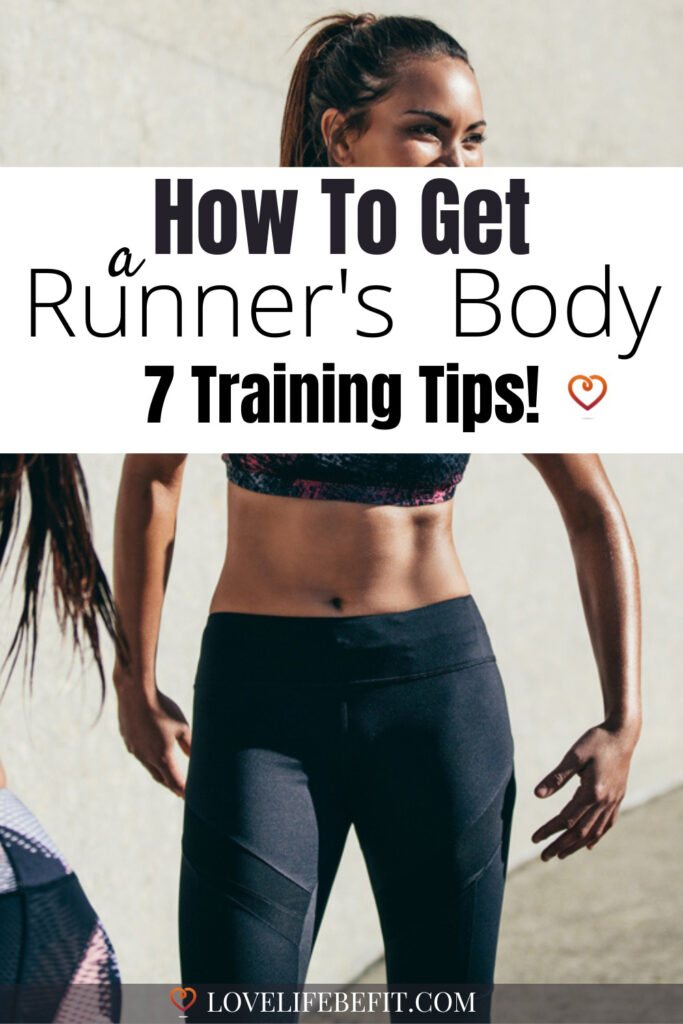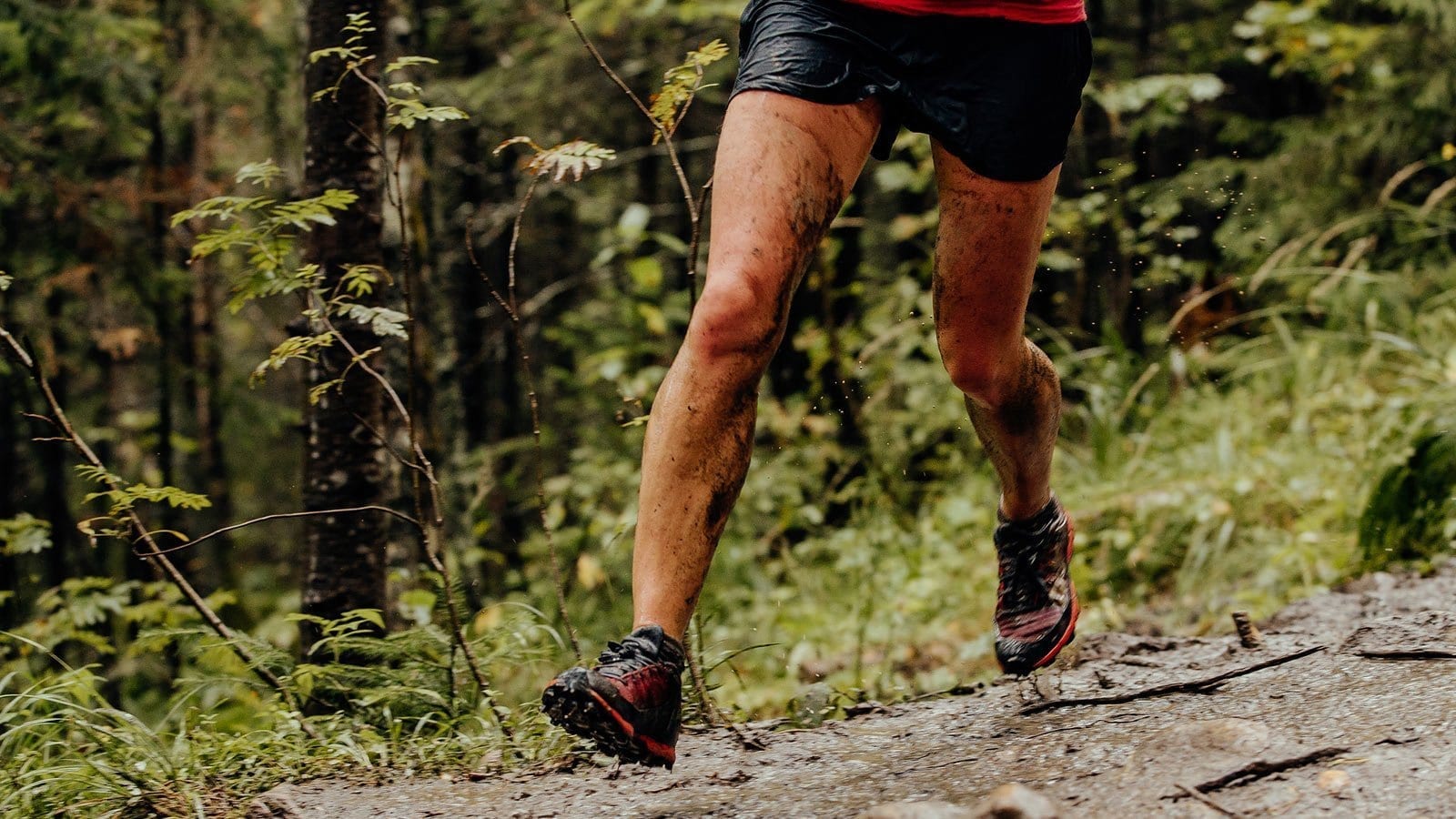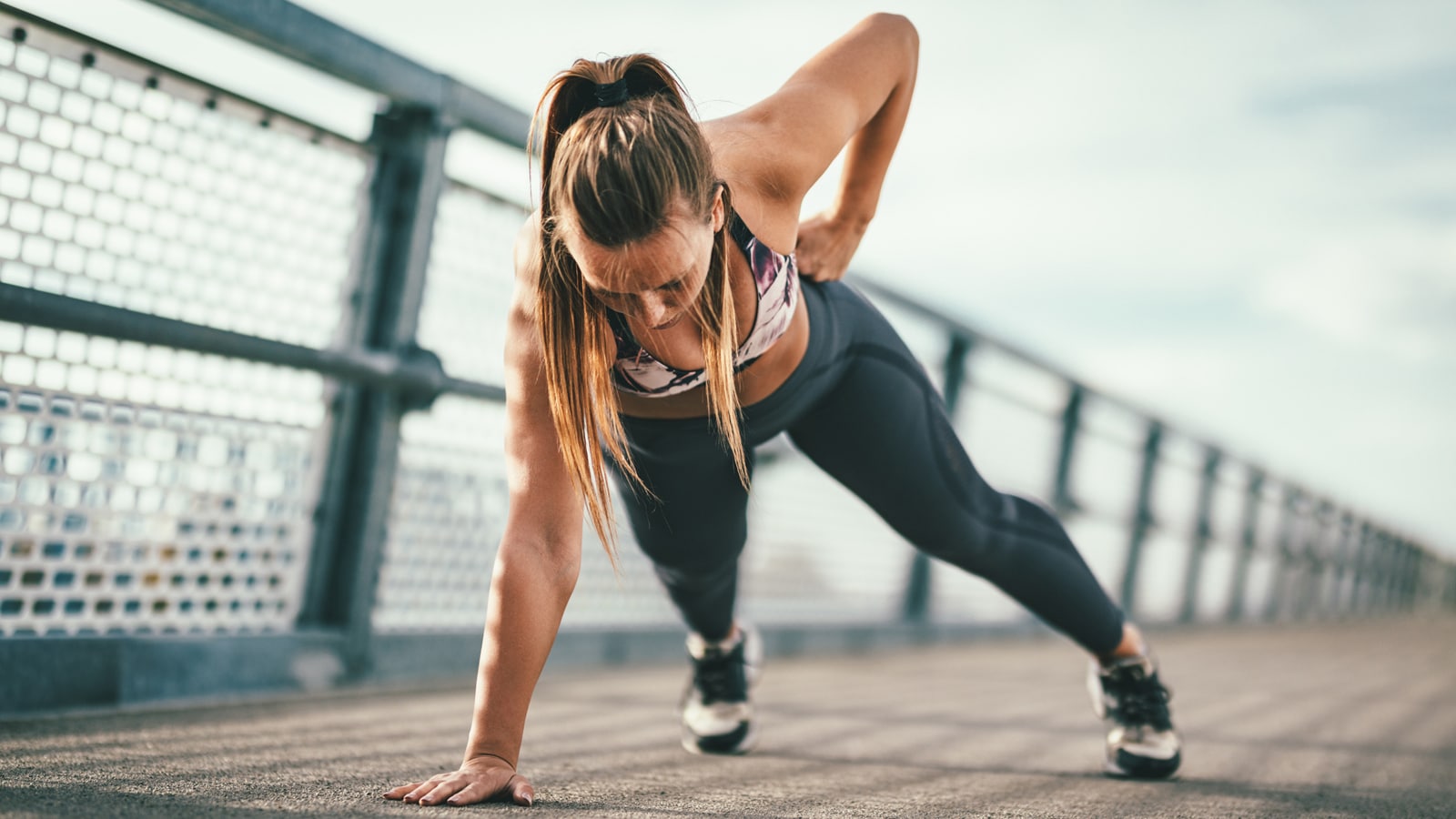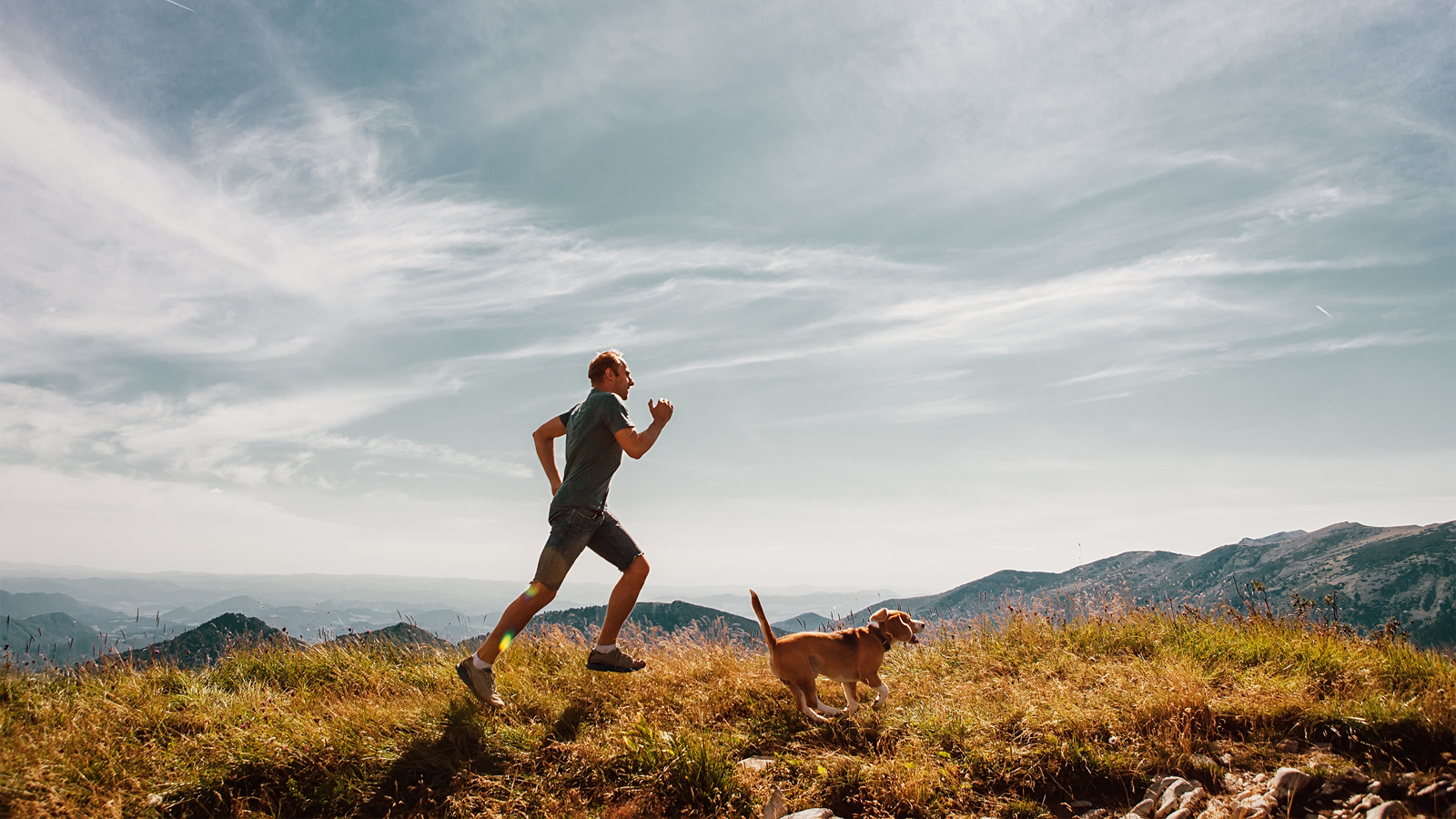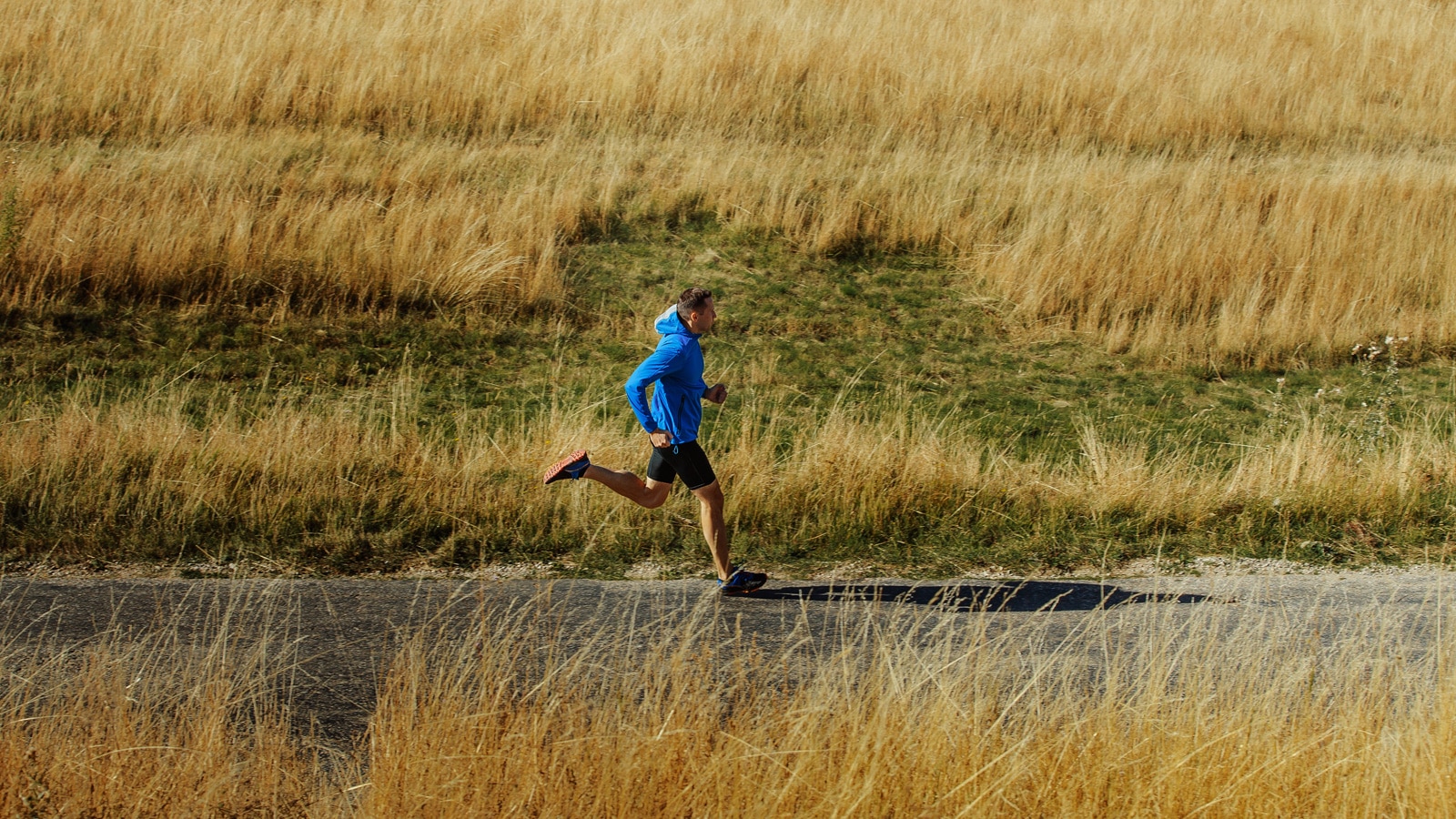How To Get A Runner’s Body: Physique + 7 Training Tips
I think I’ve heard every negative comment about a runner’s body – runners are weedy and skinny fat, runners have big butts and lots of belly fat, and runners have no upper body strength…
Most of this comes from the gym community. People with big muscles who could pull a bus but would struggle to run for one. (Only joking!)
But before we get into any arguments over which is best – gym or running let’s explore what is a runner’s body and how to get one.
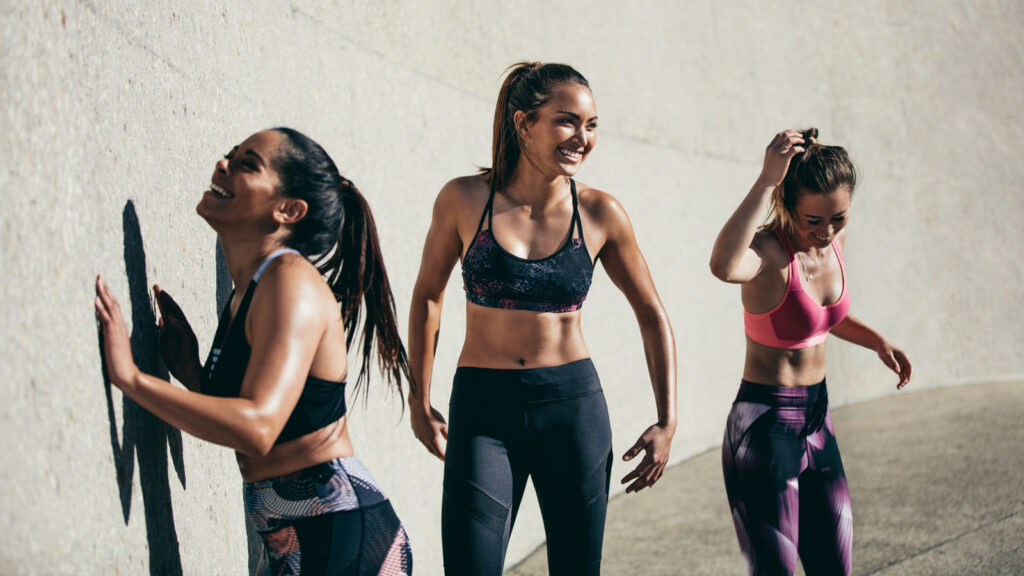
What Is A Runner’s Body?
Runners come in all different shapes and sizes from fun runners training for their first 5K to elite marathon runners. Body type, training techniques, diet, and weekly mileage will all contribute to the look and build of a runner’s body.
There isn’t an ideal runner body. If you compare a sprinter and a marathon runner, the body composition is very different!
- A sprinter’s body will be strong and muscular with fast-twitch muscle fibers to power along the track.
- Marathon runners tend to be smaller with less muscle mass and low body weight.
Take a look at these two pictures: the first is a group of young sprinters with strong legs and muscular upper bodies.
The second is a picture of Shalane Flanagan: the American Olympic medalist, and New York City Marathon champion. Shalane has smaller muscles and a low body fat percentage.
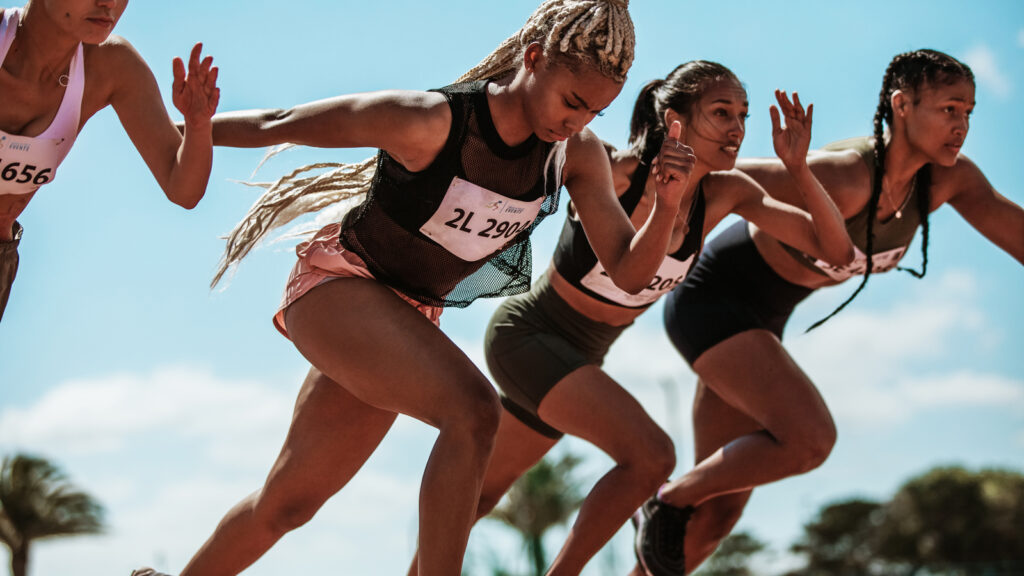
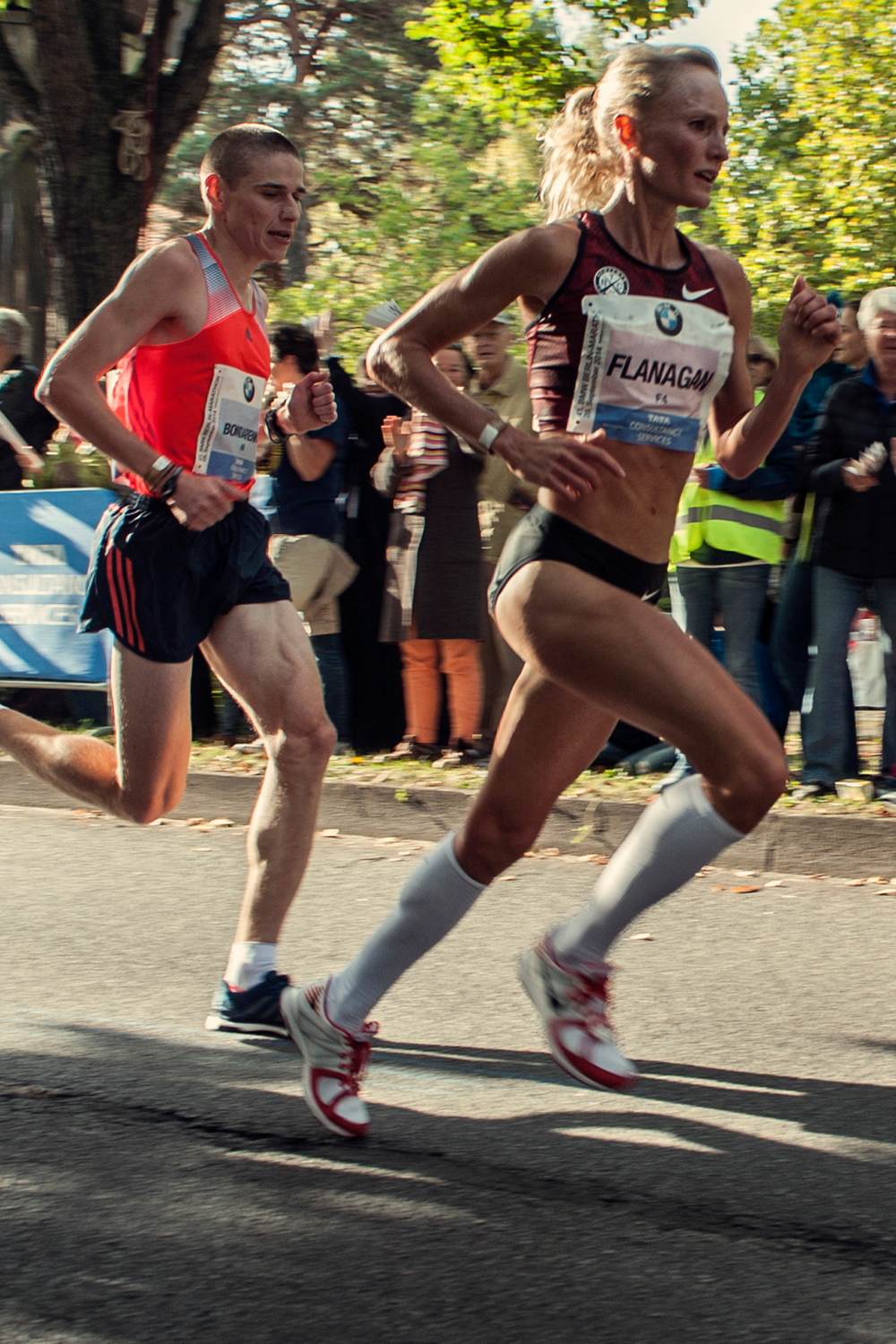
So let’s challenge a few myths about a runner’s body:
#1 Runners have a lot of body fat.
I know a lot of runners. Most of them are far skinnier than the average person.
This is the point that’s often missed. Not every runner is an elite athlete. Most are just average Joes who fit in a little running around their busy lives.
A few will take their running seriously and train hard for races. Others will go for a run and reward themselves with a piece of cake or a burger. Running takes all types.
#2 Running makes you store body fat.
The truth is, it’s not running that makes you fat – it’s eating.
Running burns body fat. It’s one of the best ways of burning body fat. A mile will burn around 100 calories. A 30-minute run can burn around 3 times the calories burned from the same time spent weight training.
Just because running tends to use fat as fuel – a good thing – it doesn’t mean running will make you store body fat. That’s nonsense.
If you’re running for weight loss and not getting results, the problem could be your diet or running in your comfort zone. Runs need to be challenging.
#3 Runners don’t need to diet.
Going for a run isn’t an excuse to eat everything in sight. If you’re trying to lose weight, you need to combine running with a healthy diet.
That’s why you can run and still gain weight. Weight gain can be a problem, especially for first-time marathon runners. Your body’s doing something completely new and all the training is making you hungry!
Marathon training is a big deal. It’s a huge step up for beginner runners and some new marathon runners take on the distance too soon in their running journey. The training puts your body under a lot of stress and one reaction can be eating too much.
If you’re concerned about your body weight, it’s better to aim for shorter distances at first and try to run faster. Step up to the marathon distance when you have more experience.
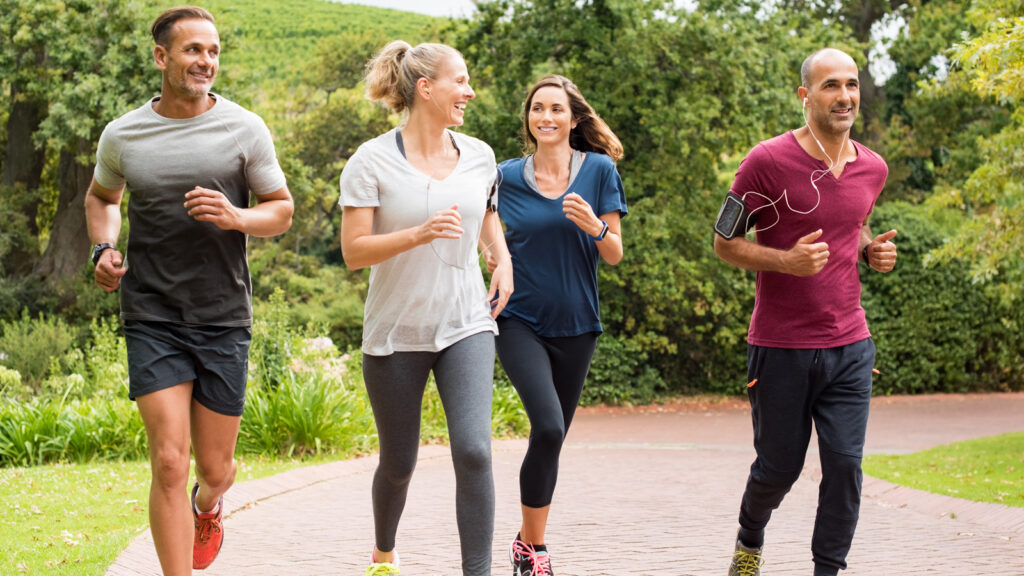
Body Of A Distance Runner
The vast majority of runners are distance runners. If you’re running on the road or trails you’re typically a distance runner.
The classification for long distance runners is anything from 3K (1.9 miles) upwards. Popular distances are 5K, 10K, half marathon, marathon, and even 50K ultra running.
For elite marathon runners, their distance runner physique has certain characteristics:
- Low body fat percentage.
- No unnecessary weight – low body mass and lean physique.
- Strong legs – glutes, quadriceps, hamstrings, and calves.
- A strong core.
- High VO2 Max.
- Low resting heart rate.
- High lactate threshold.
- A higher percentage of slow twitch muscles.
Low Body Fat Percentage Of Runners.
An elite runner typically has an extremely low body fat composition. According to the American Council on Exercise, it’s typically between 6 and 13% for male runners and 14 to 20% for female runners.
That’s low. Considering that essential fat – the fat you need to protect your organs and keep your body functioning is 2 to 5% for men and 10 to 13% for women, these marathon runners carry very little excess weight.
Often professional runners, particularly female athletes, are under constant pressure to lose weight and keep their weight low. It’s one of the ugly sides of athletics and can affect a runner’s mental health.
Pressure comes from coaches believing light runners have better running performance. This post is a harrowing read.
Losing weight may make you a faster runner but it’s not the only factor in running performance. It’s far better to aim for a normal body weight and work on your running strength. Don’t go down the spiral of taking your weight loss to extremes. It never ends well.
Strong Leg Muscles
A distance runner’s body typically has strong leg muscles. The glutes, quadriceps, hamstrings, and calves are the driving force for any runner.
Muscles won’t be as big as a sprinter’s but the lower body will be toned and strong, capable of running longer distances.
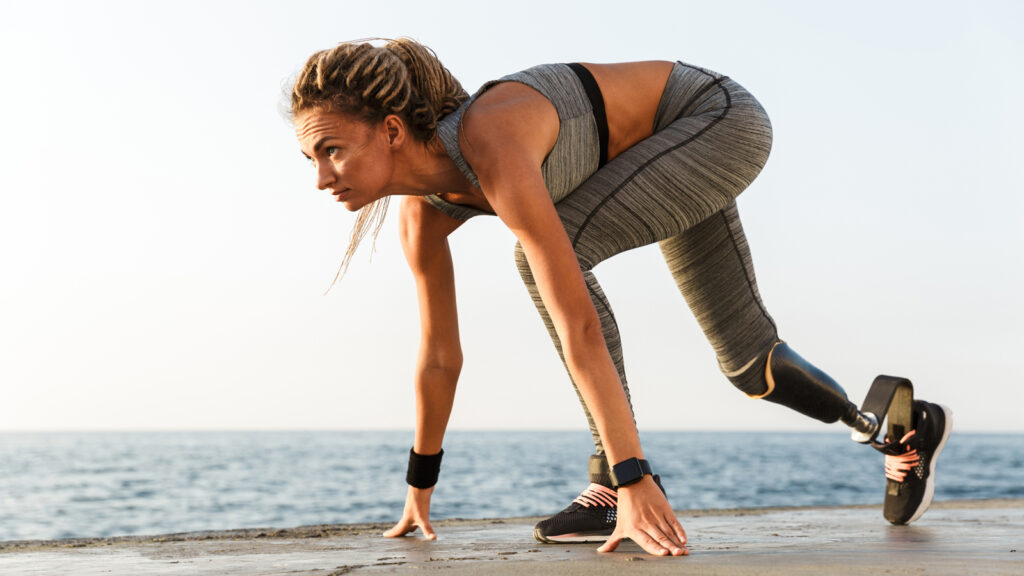
A Strong Core
Elite marathon runners have a strong muscular core. Most runners have a strong core it’s just that for some of us, that six-pack is hidden under a layer of fat.
A strong core stabilizes the torso and helps keep the upright posture you need to be a good runner. It’s important for good running form and prevents wasted energy for long distance running.
High VO2 Max
VO2 max is the maximum rate of oxygen your body can use during exercise. It’s also called peak oxygen uptake and it’s a way of measuring cardiovascular fitness.
Some people naturally have a high VO2 max but it’s not just down to genetics. The good news is VO2 max can be improved by training. It’s particularly important for endurance and running performance.
Elite marathon runners improve their VO2 max with interval training alternating short, intense bursts of exercise with rest or low-intensity activity.
Low Resting Heart Rate
The resting heart rate for an elite marathon runner is typically low. According to the Mayo Clinic, the average resting heart rate is between 60 and 100 beats per minute (bpm). Elite marathoners have a resting rate that is typically lower than this, often as low as 40 bpm for male athletes. Resting heart rates for elite female athletes are higher, but can still be less than 60 bpm.
Low heart rates are a good indication of overall fitness and conditioning. Many distance runners measure their resting heart rate to track improvements in training or get an early warning sign for overtraining.
High Lactate Threshold
The lactate threshold is the point at which your body is no longer able to clear lactic acid from your bloodstream as quickly as it produces it.
This can lead to fatigue and a decrease in performance.
When a distance runner’s body has a high lactate threshold it allows the runner to keep their speed high over a longer distance.
Higher Percentage Of Slow Twitch Muscles
There are two main types of muscle fibers:
- fast twitch muscle fibers and
- slow twitch muscle fibers.
Your fast twitch muscle fibers are all about explosive power and they fatigue quickly. Slow twitch muscles will keep you moving for longer. The pace will be relatively slower but these are the dominant muscle fibers for endurance athletes such as marathon runners.
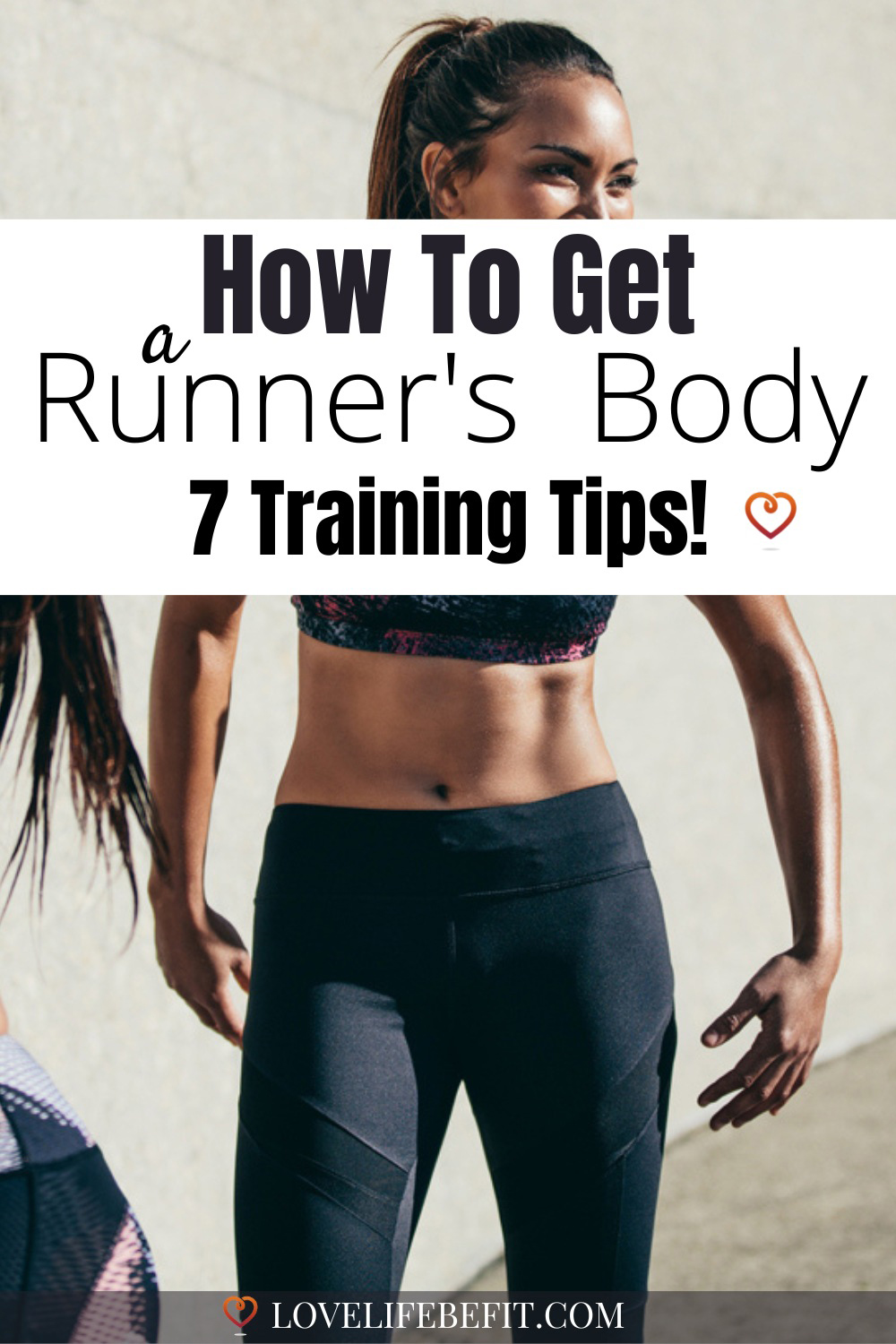
How To Get A Runner’s Body
If you want a distance runner’s body – you need to run! Whatever your body type and genetics, it’s always possible to improve at distance running.
Tip #1 Run More
Regular training will make the most difference if your aim is a distance runner’s body. It’s not enough to run just once or twice a week.
It helps to follow a running program and if you’re a beginner runner Couch to 5K is a good way to start.
It’s important to build your weekly mileage slowly, allowing your running body time to get stronger. That’s how you avoid running injuries.
More experienced runners can follow a 10K training plan or Couch to Half Marathon training plan with a weekly long run, easy runs, a speed session, and of course rest days.
Tip #2 Build A Solid Foundation
Train for stamina and endurance by running several times a week and gradually running further. You need a good foundation before you can safely add speedwork into your training plan.
Try and hold off adding intervals and tempo running into your training until you’ve been running for at least 6 months. When you first start running, running regularly will be enough to see a big improvement.
Tip #3 Wear Some Good Running Shoes
When you’re clocking up the miles and training your runner’s body, you need some good running shoes. Shoes that will help absorb the impact of running on hard surfaces. Otherwise, all your good intentions will result in time off for injury.
Tip #4 Losing Weight
As much as I hate to mention it, your body weight can make a difference. At least it will make a difference if you’re overweight.
Diet is more important than exercise if you want to lose fat but don’t try and completely change your diet overnight.
Gradually make a few small sustainable changes by swapping healthy foods for high-calorie foods.
Running is one of the best ways to burn calories so don’t try and combine running with a highly restrictive diet. Just try and eat only when you’re hungry and make some better food choices.
It’s okay to treat yourself now and again – and it’s much better than trying to deprive yourself of the food you love and ending up binge eating. Just be sensible.
Tip #5 Strength Training
This is the secret to distance running – spend time in the gym. Those legs will be more resistant to injury with some runner-specific strength training. Alternatively, try these runner-specific bodyweight exercises you can do at home.
Strength training (also known as resistance training), is important for both your legs and building a strong core. Sessions don’t need to be long. Just 2-3 short sessions a week will make a big difference.
That’s enough to reduce your risk of injury such as knee pain or stress fractures.
If you’re worried about building big gym muscles that slow down your running – don’t be. You need to be eating a diet high in protein-rich food to build new muscle cells. Just don’t get too carried away using weights.
Tip #6 Speedwork
Speedwork isn’t just for elite runners. Even if you’re marathon training, speedwork is important. To be your best as a marathon runner, you still need a good mile time.
Provided you’re not completely new to running, every runner can benefit from speedwork and increasing their exercise intensity. Running intervals (high-intensity interval training HIIT), hill repetitions, strides, and tempo runs will all help to improve your running times.
Just make sure you’re not trying to run fast every day. Even elite athletes will work on an 80/20 split where 80% of their training is at low intensity and just 20% is working hard.
Tip #7 Rest And Recovery
Rest is an important part of any training plan, especially distance running. As your weekly mileage increases make sure you add sufficient rest days into your schedule.
Those tired muscles need time to repair so they’re ready for the next session.
Related post: How Running Changes Your Body
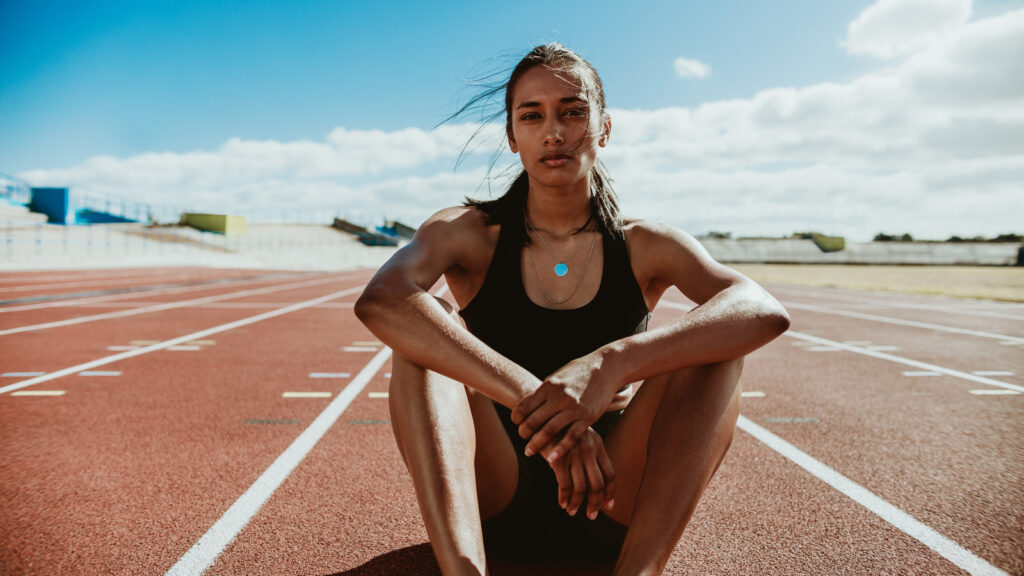
How Do I Get A Body Like A Track Runner?
People start running for many different reasons but the main ones are getting fit and healthy, and body image. A runner’s body looks good!
Track athletes such as sprinters are lean and muscular. These powerful athletes typically have great bodies! It’s no wonder people want a runner’s body!
Sprinters spend a lot of time in the gym lifting weights and the rest of their time is spent at the track on running drills and intervals.
Runner’s Body vs Gym Body
There isn’t a typical runner’s body just as there isn’t a typical gym body. Your body type and the effort you put into training will always dictate how your body looks.
- Most people choose gym vs running based on what they enjoy doing. Do you want to train in the warmth of a gym or do you prefer the freedom of running outside?
- Are you training just for looks or do you want to be a competitive athlete?
Your body shape and body type won’t stop you from being a runner. Your physical appearance is just one of the many reasons for being a runner such as:
- More energy
- Improved health and fitness
- Increased confidence
- Mental health benefits
- Making new running friends.
Related post: Is Running Good For You?
How Long Does It Take To Get A Runner’s Body?
Start running and in just a few weeks you’ll notice a difference. The first few runs can be hard but make sure you get to your 9th run – about 3 weeks in before you decide if you enjoy running.
Your fitness starting point, body mass, body type, and what you want your body to look like will all affect how long it takes to get the look you’re trying to achieve. However, after 6 to 12 months you can expect some big changes if you’re starting from a low fitness level.
Hopefully, running will have a positive impact on your confidence and you’ll realize looks are not everything. You don’t need a perfect runner’s body to get to the finish line on a marathon!
How Can I Get A Runner’s Body Without Running?
If you try running and decide you don’t like it – that’s okay! Just find an activity you do enjoy. Many sports will give you an athletic build such as cycling or swimming.
The best way to get fit is to keep trying new things until you find a sport or activity you enjoy – there’s something out there for everyone!
